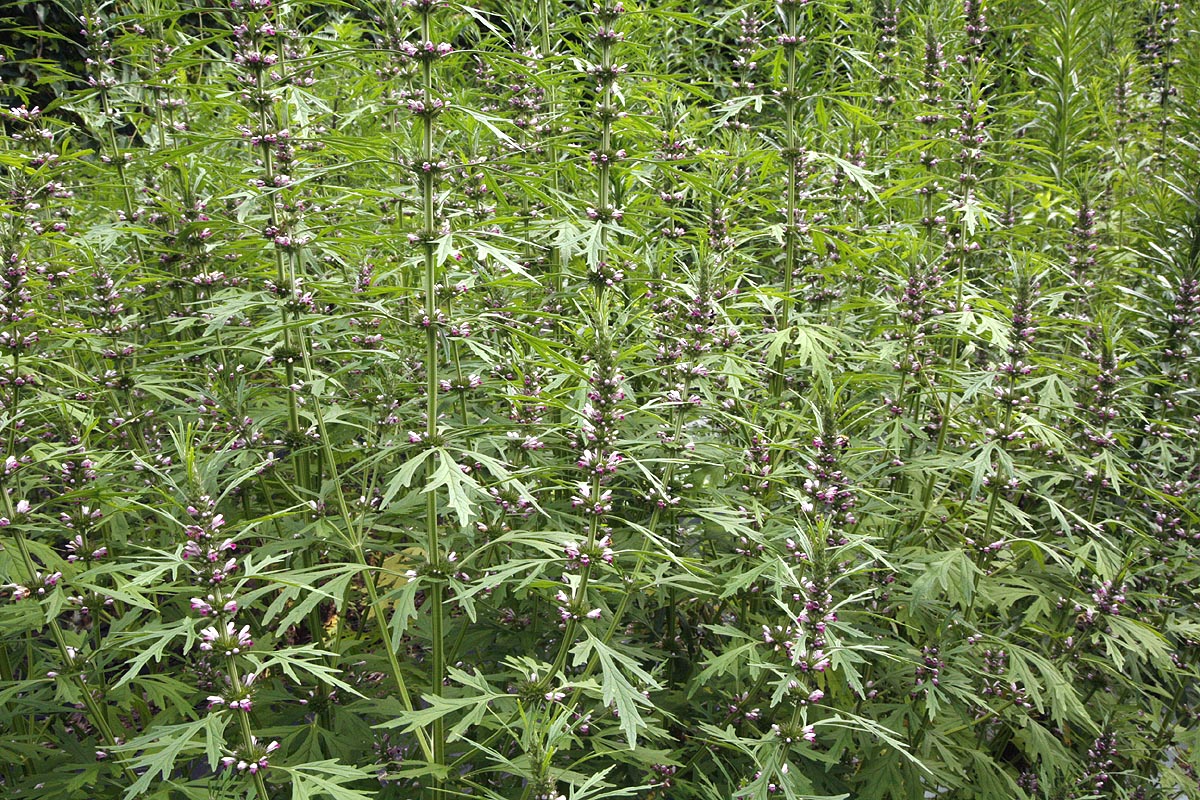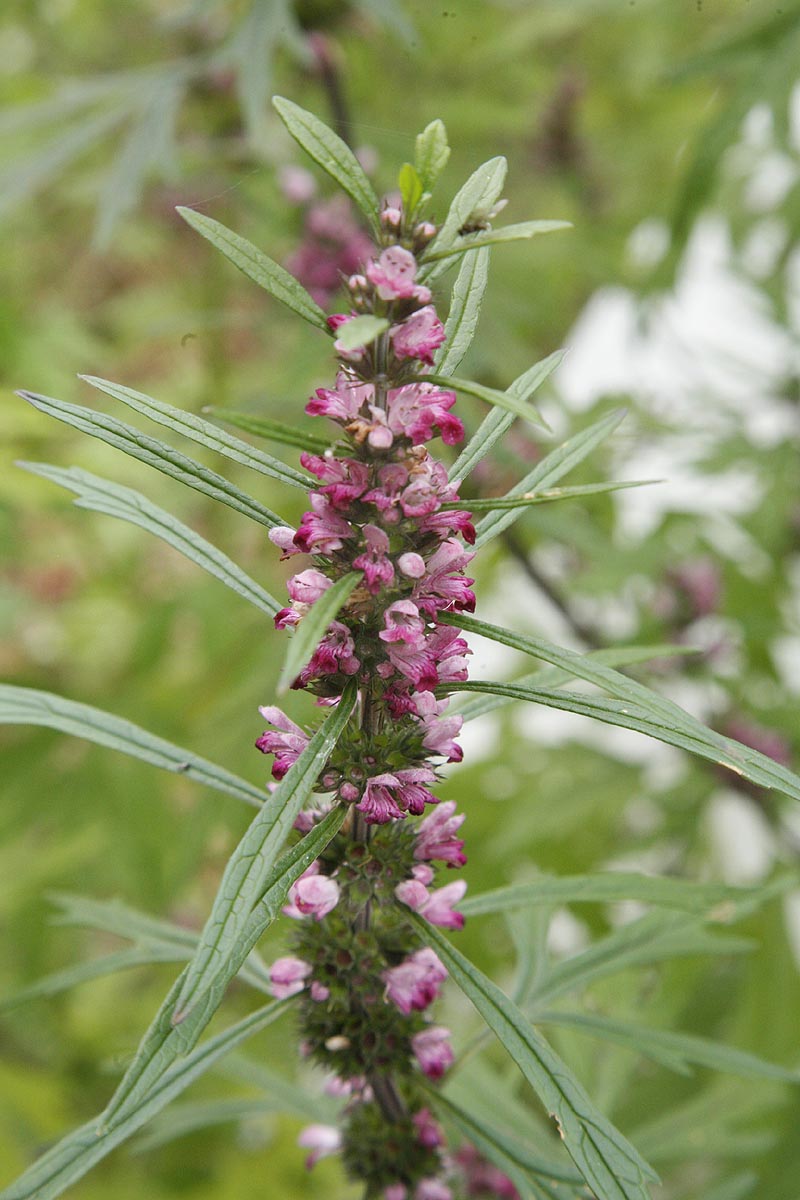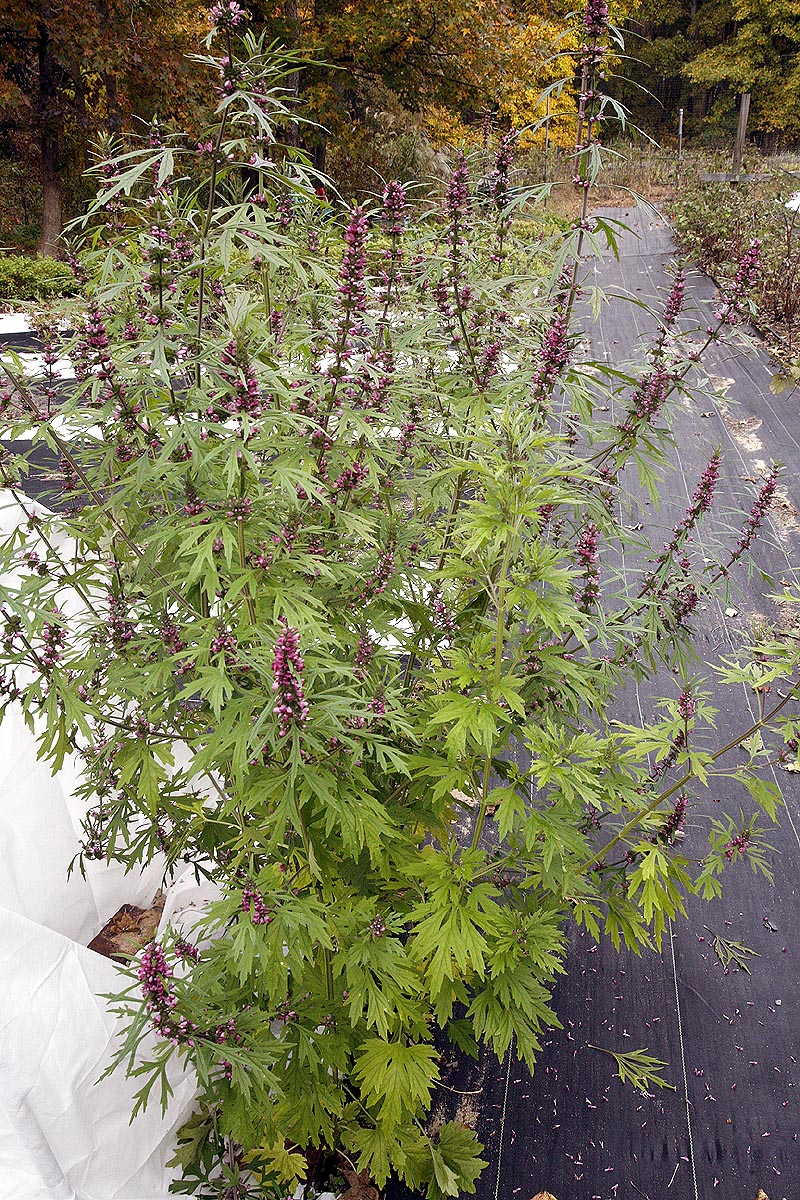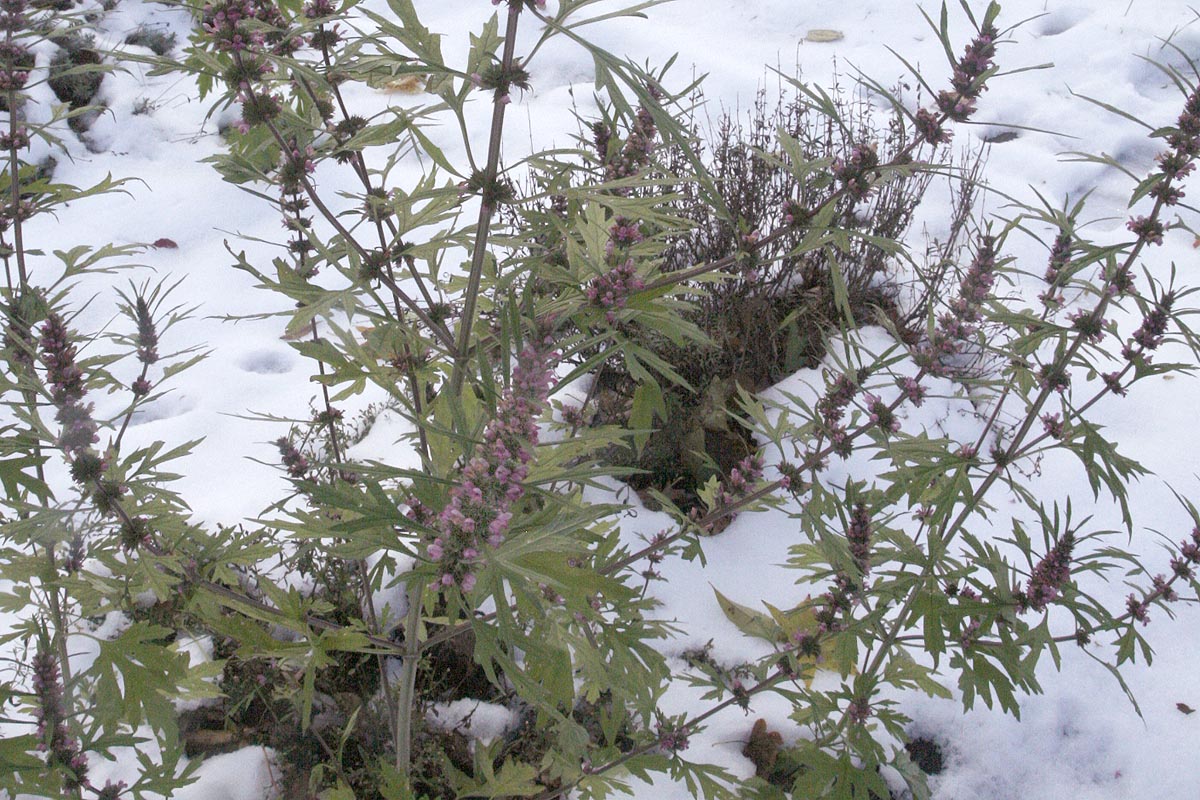Also known as Chinese Motherwort, Honeyweed or Marihuanilla. A tall branching annual with masses of small pink flower spikes. Not only flowers at the top of the spiked but at every node on the plant as well. If snow early will begin to flower in mid to late spring and can continue until a hard frost kills it. laughs at mild to mid frosts (its Siberian after all). Can grow up to seven feet in ideal conditions we might be able to detect an aroma on it but bees and butterflies flock to the plant all year long. heavy producer of pollen and nectar its a wonderful plant for everyone even humming birds. very easy to grow, sow and forget it. Best to sow at two week intervals to get lasting blooms up until winter kills it. Wildlife don't eat it neither do predatory bugs. Its also a powerful herb works to relax smooth muscle so used in many heart formulas as well as for asthma and diabetes. New studies show its promising for cancer too. No garden who wants to help pollinators should be without this plant.
Description of Siberian Motherwort (Leonurus sibiricus).
Tall annual. Begins as single bright green upright stalk with medium sized deeply cut bright green leaves arranged around a square stem. These immature plants have rounder leaves that are not as deeply cut as mature ones. As the plant grows these change to deeply cut lobes with toothed margins that are produced in opposite pairs at intervals of fairly large thick square stem. Stems can grow to about 4 feet (1.2m) before they begin to branch out with up to four branches from each node forming an open airy box-work. Each branch ends in a long flowering spike but other flowers from in clumps at the nodes of each branch. Flower spikes circle the stem in small spiky whorls with flowers blooming mostly from the bottom of the stem upwards but flowers can bloom at multiple levels of the stem at the same giving the spike a much longer and more impressive flowering period. Plants can bloom for over a month or more and are prolific pollen and nectar producers.
Each flower is about 1/3 to ½ inch long (07.-1.3cm) with a small tube of pink petals. Each bloom lasts several days and leaves behind a hard spiky calyx that holds multiple seeds. Plant can produce flowers and seeds at the same time. In the right conditions plants can reach 7 feet (2.1m) in height and open box can be 3-4 feet (1-1.2m) across. The stems and calyx are tough and woody taking a long time to decompose during the winter months.
Growing Siberian Motherwort (Leonurus sibiricus) from seed.
very easy to grow from seed. Can be started indoors in pots or direct sown. For best and longest flowering sow in succession about four weeks apart. This will offer long lasting blooms until winter. Plant produces seed rapidly so later sowings should occur naturally. For more information of starting seeds see our
General Growing Instructions.Outdoors. Can be sown before frost has passed. ensure ground is unfrozen and can be worked. For large plants sow seeds about 12 inches (30.48cm) apart. Closer will produce smaller plants as the compete for space. Seeds will germinate as soon as soil temperatures reach their desired level which tends to be early so will sprout very soon after heavy frost has passed. will tolerate light frosts and still grow well.
Location and Care of Siberian Motherwort (Leonurus sibiricus)
Does best in full sun but can take some partial shade provided it does get some full sun during the daytime. In colder zones 5 and cooler full sun is recommended in warmer zones 8 and more shade is best as this is a Siberian plant and is used to cold shade from noon sun offering morning and afternoon sunshine when temperatures are cooler.
Likes a well drained soil, does not do well on wet soils or heavy clay. Sandy or sandy loam is paradise for this plant. If supplied with organic material will grow rapidly and produce lots of lush leaves as grows and produces flower stalks.
Once its growing it takes almost no care, the open structure of the plant does allow light through so it does not complete well with weeds, its strategy is to grow taller than most weeds and thus succeed in height. The stems are large can be over an inch (2.5cm) in diameter so are strong and hold plant up well, never needs staking.
Plants grow rapidly and can reach 7 feet in 4 months or less in good conditions. Begins blooming early so provides good nectar and pollen for insects. Will tolerate mild spring and autumn frosts flowering throughout the mild autumn frosts but is killed by strong frost. Can even tolerate a snowfall if the temperatures are not frost causing. Its the frost freezing the water in the cells and bursting them that causes the issue not the cold or the snow.
Plants usually last around 5 months then seed and die so having others coming up behind them to produce continuous flowers is beneficial. If sown at two week intervals its possible to have plants flowering throughout the growing season.
Pollinator and Wildlife with Siberian Motherwort (Leonurus sibiricus).
Since the flowers produce a lot of nectar and pollen these plants are sought out by almost every kind of pollinator they are especially loved by bees and bumblebees love them since they offer a good food source at times of the year when other plants are not producing. Butterflies and even humming birds visit the flowers and if grown in groups the sound of the bees humming can be heard from quite a distance. few insects seem to feed upon the leaves and wildlife don't seem to eat it which is a good bonus for the pollinators. They do however like the seeds and seeding plants are often covered in small birds picking them out or gobbling up the dropped seeds. Collecting seed is a good way to supplement bird feeding in winter and chickens really love them.
Harvesting Siberian Motherwort (Leonurus sibiricus)
Leaf which is used commonly in herbal medicine is mostly harvested from younger plants before they flower. As plant matures the large leaves die off and only smaller leaves remain which are difficult to harvest and don't offer a lot of material. Most commonly whole plants are harvested just as they begin to produce flower spikes and leaves stripped from the stem. Leaves also have a long stem which also contains the useful compounds so is left with the harvest. Since it is part of the leaf removing it is very difficult.
Seed. If harvesting for seed its best to leave the plant until most of the flowering has completed. At this point all the leaves fall from the plant leaving only the open box-work of stems. Carefully use plant snips remove EACH INDIVIDUAL STEM one at a time. Don't try and cut the whole plant down at once as it will drop most of the seed on the ground. Use a large tote and carefully upend stems into the bin one at a time. Wear gloves the stems are prickly.
Culinary Uses of Siberian Motherwort (Leonurus sibiricus)
The young shoots are apparently cooked and used as a potherb or vegetable. They are reported to have a sweetish flavor.
Medical uses of Siberian Motherwort (Leonurus sibiricus)
Siberian or Chinese motherwort has been used for centuries in Chinese medicine and is usual in that it is usually used alone rather than in complex formulas that Chinese medicine usually dictates. It contains an alkaloid called leonurine which acts to relax the smooth muscles of the body. For this reason it is used to treat many issues including heart and lungs. Most commonly used to help relieve painful and excessive menstruation but also kidney complaints and stones. Research has shown it can slow heart palpitations and a fast heartbeat, making it an excellent treatment for cardiac anxiety lung irritation and asthma. Long ignored by western herbalists it is now becoming more popular and is included in many newer herbal formulas. Recent research has suggested a it may be effective in treatment of some cancers.
Due to its properties as a muscle relaxant it should not be used in pregnancy.
Other names
Chinese motherwort, Honeyweed, Altamisa, amor mio, chinesischer lowenschwanz, chinesisches mutterkraut, coda di leone, gras zum segen der mutter, ich-mau-thao, i-mu-tsao, mahjiki ,203 marihuanilla, marijuanillo, mehajiki, motherwort, rangadoronphul, Siberian motherwort, sibirischer, lowenschwanz, sibirisches herzgespann, sibirisches, mutterkraut, t'uei, yakumosos










